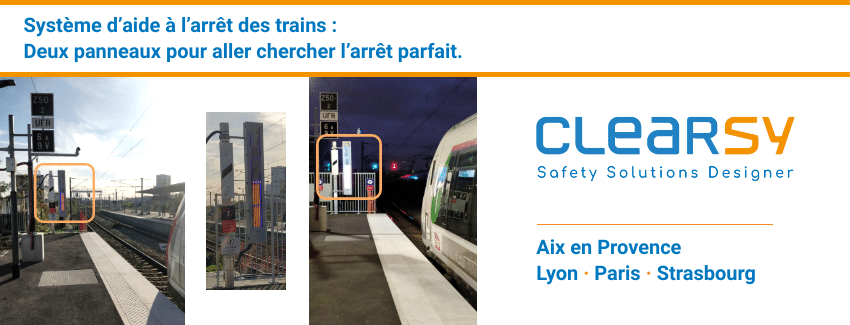
Train stopping aid system: CLEARSY is providing SNCF with the benefit of its successful experience for the Stockholm metro with a pilot project in the Paris region.
Epinay-Villetaneuse, a station in the Paris region. SNCF is testing there a train stopping aid system for drivers. This project is part of a more global approach to assess feasibility of platform doors along the platforms with automatic door opening. Its success is based on precise stopping. Not so simple if you consider the inertia force of a train weighing several thousand tonnes arriving at a station at a speed of 80 km/h. Without anticipation, it is impossible to stop the train precisely. Accompanying the driver with a system capable of collecting, analysing and communicating in real time the position of the train in relation to its operating stopping point (OSP); this is the challenge of the solution developed by CLEARSY. Its train stopping aid system accompanies the driver over the last 40 metres. It goes very fast: it only takes about ten seconds to go through them.
Such a system involves two functions. The actual stopping aid function and the function for calculating the train’s position. The first is supported by one lightboard with two different displays on each of which you can see a gauge, materialized by LEDs, which empties as the train progresses and so indicates the intensity of braking. At 40 metres from the stop point, the driver enters the area covered by the first gauge. The second gauge will enable the driver to find the perfect stopping point, it intervenes on the last 75 centimetres, specifies Sébastien Chabanel. The position function is trickier because it involves continuous, dynamic measurement and rapid data processing. This is ensured by a complex algorithm developed by CLEARSY. It provides the two gauges with position information calculated from images delivered by optical sensors installed on the platform. The orientation of the sensors determines the detection area, and in-house software “allows us to interpret what the sensors see”. Like the sensors, the lightboard is on the platform: the solution does not require any on-board equipment, which is ideal for a pilot program.
CLEARSY has developed and successfully tested this solution in Stockholm for two stations of the prestigious Citybanan line. SNCF, which was familiar with this project, came to us with the same requirement as the Swedish customer, to improve train stopping precision, in the same context of platform screen doors with automatic door opening,” explains Sébastien Chabanel, the engineer in charge of the project at CLEARSY. So we gave our SNCF customer the benefit of our feedback. Starting with the 40-metre measurement. We know from the tests carried out in Stockholm that this is the distance the driver needs to brake successfully.
Operational tests are being carried out on the system in service since November 2019. They will notably allow us to measure its impact on train punctuality.